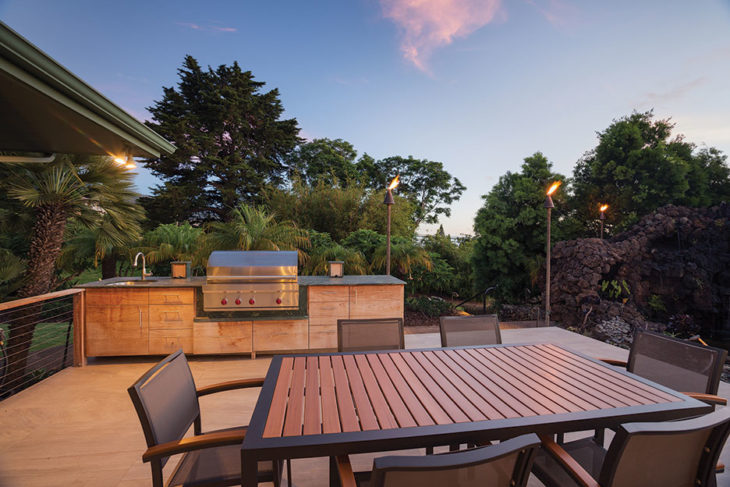Picture it — making everything from bacon and eggs to burgers and steaks al fresco.
The pandemic has turned our attention homeward, and many of us are making our domestic dreams a reality – including building outdoor kitchens. Done well, such additions can increase your living space, add to your enjoyment of your home and increase your property’s value.
If you’re considering a backyard cook spot, here are some guidelines to follow.
1) PLAN CAREFULLY
Although you’re outside, good design principles still apply. Be intentional with where you place the kitchen in relation to the house, and where you place grills, refrigerators and prep areas in relation to each other.
SOME QUESTIONS TO CONSIDER:
What’s your style — traditional, contemporary, rustic, etc.?
How will the indoor and outdoor kitchens function together for entertaining? What is the maximum number of people you expect to host at one time?
What would be handy, like a dedicated gas line or side burner to sauté veggies?
What would be a worthy splurge, like a pizza oven?
What amenities, like a sink or fridge, would prevent you from having to run back and forth between your home and backyard?
How much storage will you need?
What is your budget, and what are your priorities? Factor in the cost of obtaining permits, tools and any professional help you may need with design, electrical or plumbing work.
Which pieces, if any, do you want to be portable?
Overall, be mindful of flow, and arrange the kitchen for maximum efficiency and function. Also make sure your addition complements your home’s design and landscape.
2) CONSIDER MAINTENANCE
The hot, humid climate of south Mississippi is hard on any material exposed to the elements. For exterior appliances, experts recommend stainless steel, which is easy to clean and corrosion resistant. You may like the look of teak, but bear in mind that it must be finished annually with a clear sealer. Concrete and natural stone, likewise, require periodic resealing.
The less work you have to do to keep your outdoor kitchen working well and looking great, the more you’re likely to use and enjoy it. Even if you invest in ultra-durable equipment, make sure you protect it with a cover.
3) DON’T FORGET CREATURE COMFORTS
As you focus on your kitchen’s cooking-centric elements, don’t overlook its most important purpose — to be a gathering place. With that in mind, what will you need to entertain guests and make them comfortable? Make sure to provide shade and cover from rain, and heaters are a good idea for cooler weather. It’s also wise to integrate sound and lighting systems into your initial plan rather than adding them later.


